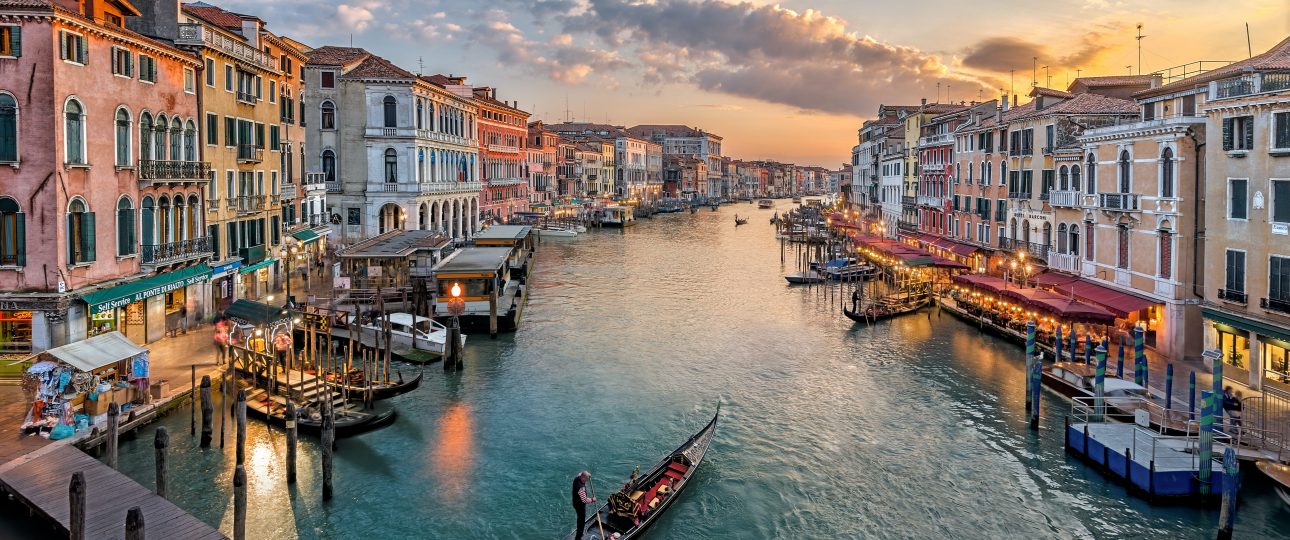About Venice
Venice, situated on the northeastern coast of Italy, is a city built on more than 100 small islands in the Venetian Lagoon. Known for its canals, historic architecture, and vibrant cultural scene, Venice offers a travel experience unlike any other. The absence of cars and the intricate network of waterways create a unique atmosphere that captivates visitors from the moment they arrive.
The Charm of Venice
Walking through Venice feels like stepping into a living museum. The city’s historic buildings and narrow alleyways transport you back in time. As you cross the many bridges over the canals, it’s easy to imagine the city as it was during its days as a powerful maritime republic. Gondolas, the traditional Venetian rowing boats, glide through the canals, offering a serene way to take in the city’s stunning architecture and peaceful ambiance.
Best Time to Visit
Venice has a humid-subtropical climate with hot summers and cool winters. The ideal time to visit is during the spring (April to June) and fall (September to October) when temperatures are mild, ranging from 50°F to 77°F (10°C to 25°C), and the tourist crowds are thinner. Summer months can be hot and humid, with temperatures reaching up to 82°F (28°C), and the city can become quite crowded. Winter visits offer a quieter experience, but be prepared for chilly, damp weather and occasional fog.
Getting to Venice
Venice is accessible via two main airports: Marco Polo Airport, which is closer to the city, and Treviso Airport. From Marco Polo, you can take a water taxi or a bus to reach the city center. Venice is also well-connected by train, with the Venezia Santa Lucia station providing easy access to the city’s main attractions. Booking train tickets in advance is recommended, especially during peak travel seasons.
Getting Around in Venice
Venice’s transportation revolves around its canals. The vaporetto, or water bus, is the most popular way to navigate the city, with routes covering various areas. Tickets can be purchased for single rides or as multi-day passes. For a more direct and private experience, consider hiring a water taxi, though this option is more expensive. Walking is another excellent way to explore Venice, especially in the car-free city center. Comfortable shoes are a must for navigating the cobblestone streets.
Exploring Venice’s Attractions
1. St. Mark’s Square and Basilica
St. Mark’s Square, or Piazza San Marco, is the heart of Venice. Surrounded by stunning architecture, it’s a great starting point for exploring the city. St. Mark’s Basilica, a masterpiece of Byzantine architecture, is a highlight with its intricate mosaics and golden interior.
2. Rialto Bridge
The Rialto Bridge is one of Venice’s most famous landmarks. Spanning the Grand Canal, it offers breathtaking views of the city. Nearby, you’ll find a bustling market where you can buy fresh produce and local delicacies.
3. Doge’s Palace
Adjacent to St. Mark’s Square, the Doge’s Palace is an architectural gem that once served as the residence of the Doge of Venice and the seat of government. A guided tour reveals opulent rooms, impressive artwork, and insights into Venice’s rich history.
4. Murano Island
A short boat ride from Venice, Murano Island is renowned for its glassmaking traditions. Visit the glass factories to see artisans at work and perhaps purchase a unique piece to take home.




